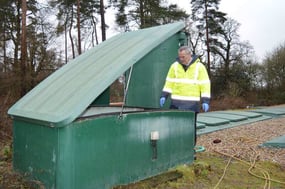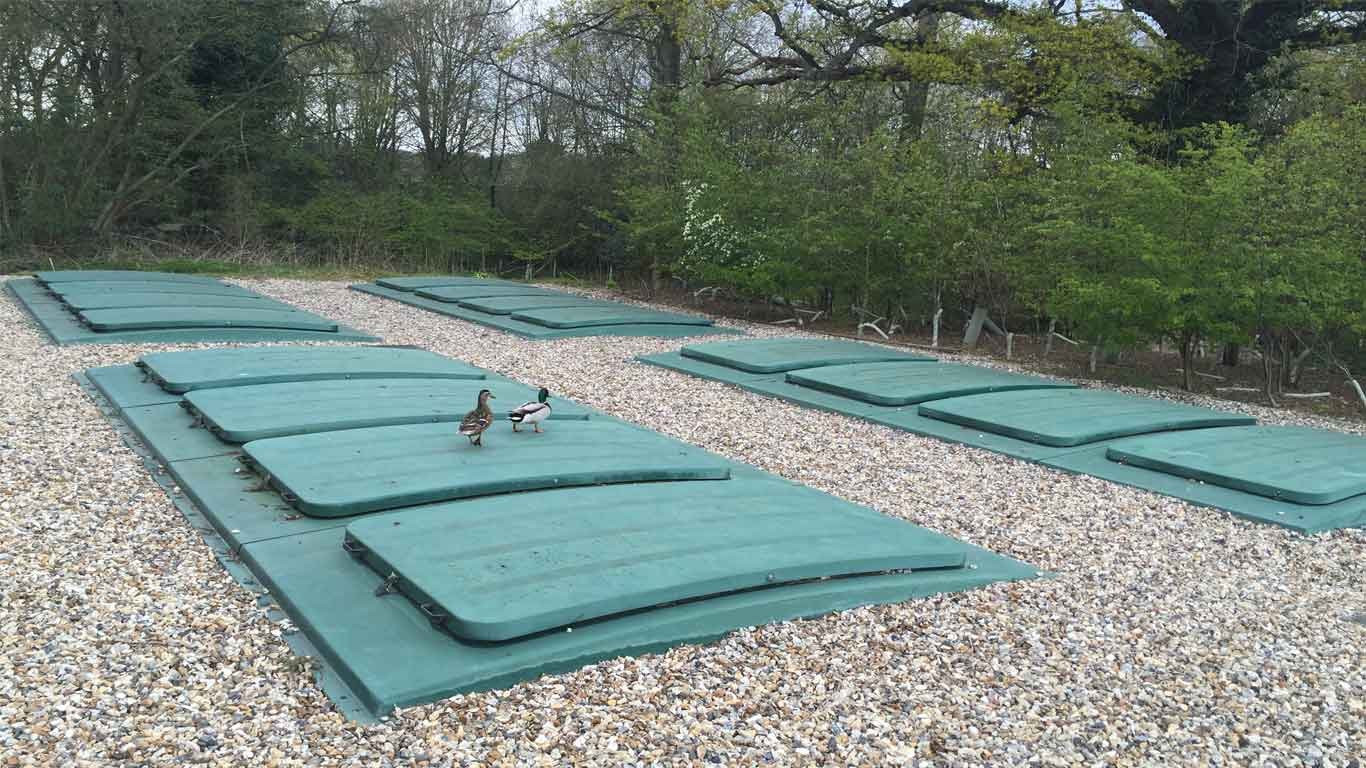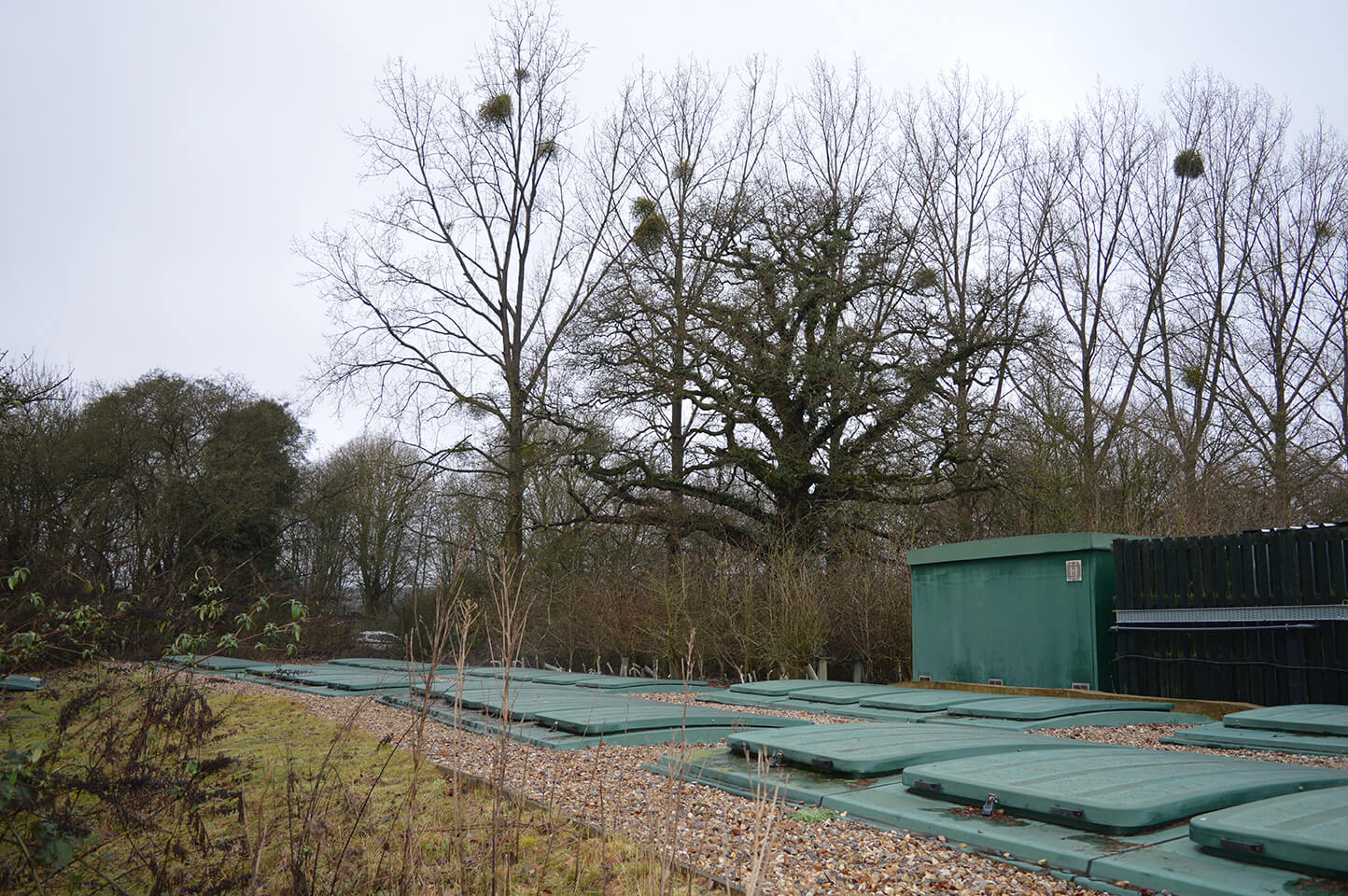We’re on LinkedIn!
Connect with WCS Environmental Engineering Safe Efficient Compliance

The cause of an unexpected rise in levels of suspended solids in wastewater at a motorway service area, in south-east England has been identified and addressed by our Site Services Team.
The package wastewater treatment plant serves foot traffic of up to 1000 people a day and when installed was successfully reaching around 50% less than the consent to discharge standards. Five years later the service area expanded its facilities and with the introduction of a new eatery, the company that operates the services noticed that the site was beginning to raise towards its consent standards.
“Initially, we couldn’t understand why it was happening,” says Andrew Baird, technical director. “The solids were inert not organic as we would have expected to see.”
Baird explains that the plant had risen close to consent standards previously, which was down to shards of snail shells that had been cutting the micro-screen cloth, allowing solids to discharge. Snails are a particular difficulty within the wastewater industry as they feed on the micro-organisms within the biomass.
“We were managing them,” says Baird, “though it was difficult. We were actually collecting them in buckets.”
The solids increased when the eatery opened with the cause identified as snail shells being dissolved and passing straight through the screen. Analysis carried out identified the cleaning product in the eatery as having caused the high suspended-solids in the wastewater.
The new cleaning fluid was acting like an anti-scalant and dissolving the snail shells into the water, greatly increasing the amount of calcium in suspension. Due to the particulate size, the calcium was able to pass through the screen’s 20-micron cloth without causing damage.
Having identified the problem, we then had to seek a solution.
“We couldn't really ask the service station to take everything offline while we administered a toxic shock to kill everything in the system, and then have to do it again six months later,” Baird recalls. “Anyway, at around £100,000 a go, it would have been a costly bill for the client.”
We sought a chemical solution and, after trying various coagulants, they found that a flocculant employing polyaluminium chloride (PAC) solved the problem, binding and removing most of the suspended solids in the primary tank. Any organics that got through were successfully removed by the biological treatment that follows.
The new chemical regime has also considerably reduced the snail numbers, and in addition has resulted in much quicker settling of the sludge in the primary tank.
“We were previously tankering away at a rate of four tankers monthly,” says Baird. “We are now down to one tanker per month.”
He points out that use of PAC by the company is nothing new: “We use PAC for all sorts of applications,” he says. “We use it in industrial wastewater treatment, to convert chemical oxygen demand (COD) into suspended solids, for colour-removal and in load-lopping, where a works is nearing its upper limit you can remove some biochemical oxygen demand (BOD) before it goes into the biological treatment stage.”
“It also removes phosphorus, which can reduce oxygen levels when it is discharged into surface water, causing eutrophication.” Baird adds.
The introduction of chemical dosing has helped reduce silt build up in the wetland immediately after the discharge point. This has resulted in an explosion of flora and fauna along its length, including adders, red kites, deer and ducks.
Baird continues “The new regime introduced to the package wastewater treatment plant delivered a marked improvement in day-to-day control management and operations. I find it encouraging to see enhanced biodiversity around the site, which is now alive with wildlife and plants.”
A temporary chemical dosing kit has now been replaced with a permanent one that allows for instant monitoring and adjustment via telemetry signals to the mobile phones of our call-out team.

Baird stresses the team’s extraordinary diversity of skills.
Each upgrade project begins with a thorough survey and assessment of the existing system, which allows us to tell the company which parts need to be replaced or repaired, or in this case, a solution found. Specialist engineers are able to carry out repairs of glass-reinforced plastic structures – using breathing equipment and following the procedures required for work in confined spaces.
Baird observes, “We offer our clients complete peace of mind and our engineers are qualified to carry out even the most difficult jobs safely and efficiently. They can also refurbish package plants produced by other companies.”

With nutrient neutrality requirements being enforced at off-mains properties in areas of England, homeowners need to ...
Why managing variable loads matters If you have an off mains wastewater treatment system operating at a hospitality, ...
Trade effluents are liquid waste streams discharged into public sewers from businesses and industrial processes. Their ...
Connect with WCS Environmental Engineering Safe Efficient Compliance
WCS Group is a trading name for WCS Environmental Ltd, registered in England and Wales (Number 02184649) at 20 Grosvenor Place, London, SW1X 7HN. Head Office – 17 Wheatstone Court, Waterwells Business Park, Gloucester, GL2 2AQ. WCS Group is a Marlowe Critical Services Company owned by Marlowe plc. 2025© WCS Environmental Ltd.